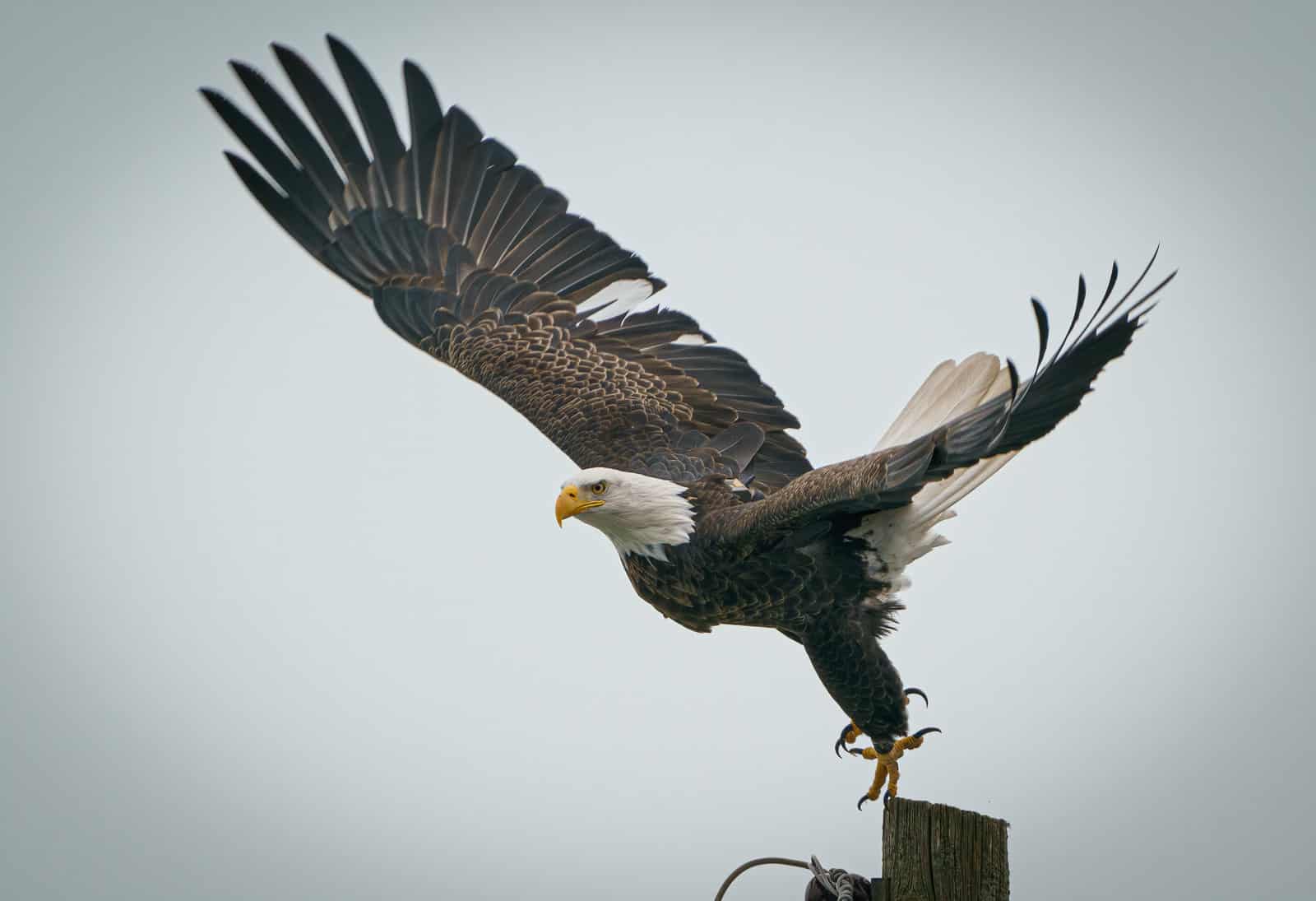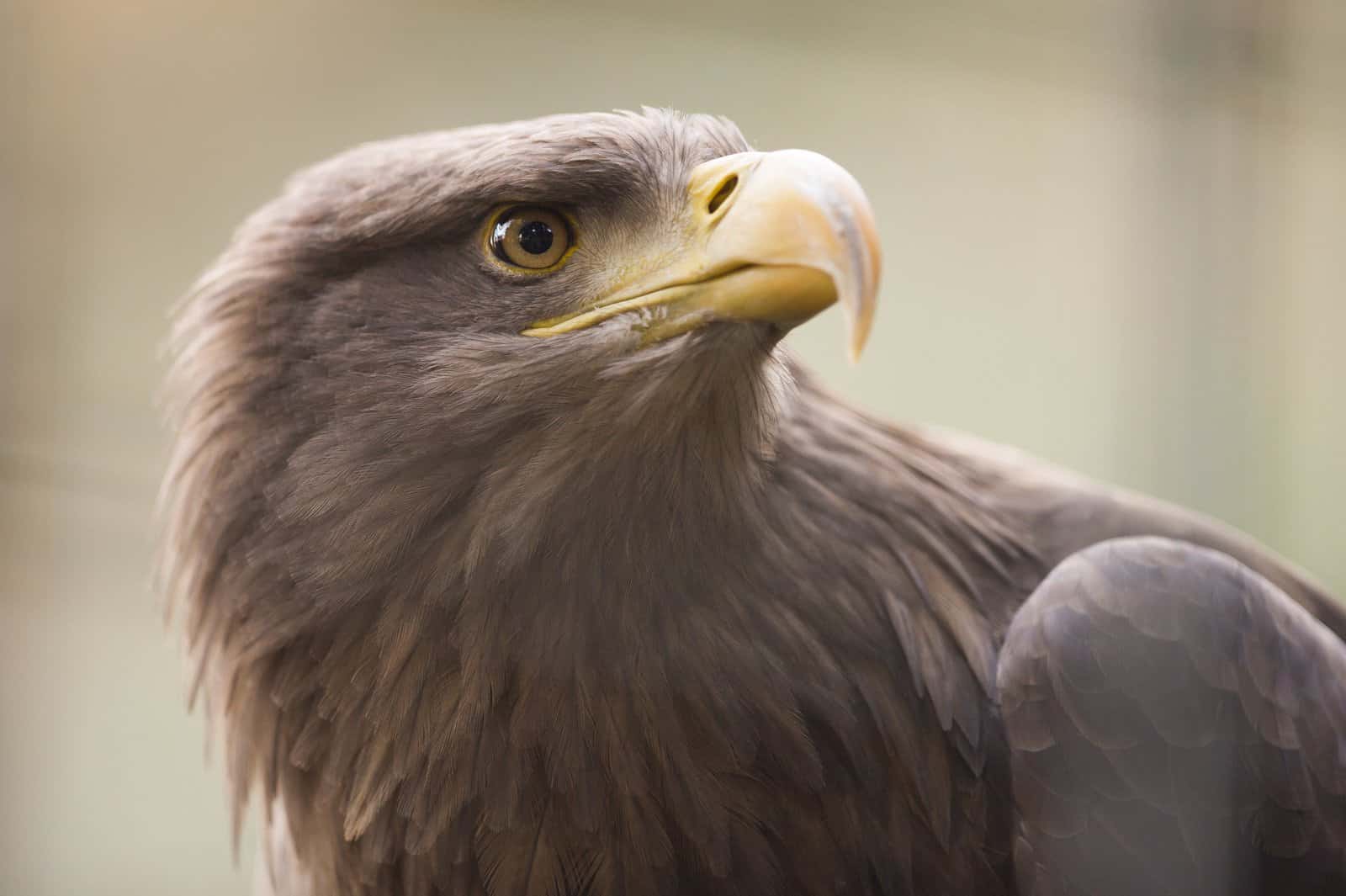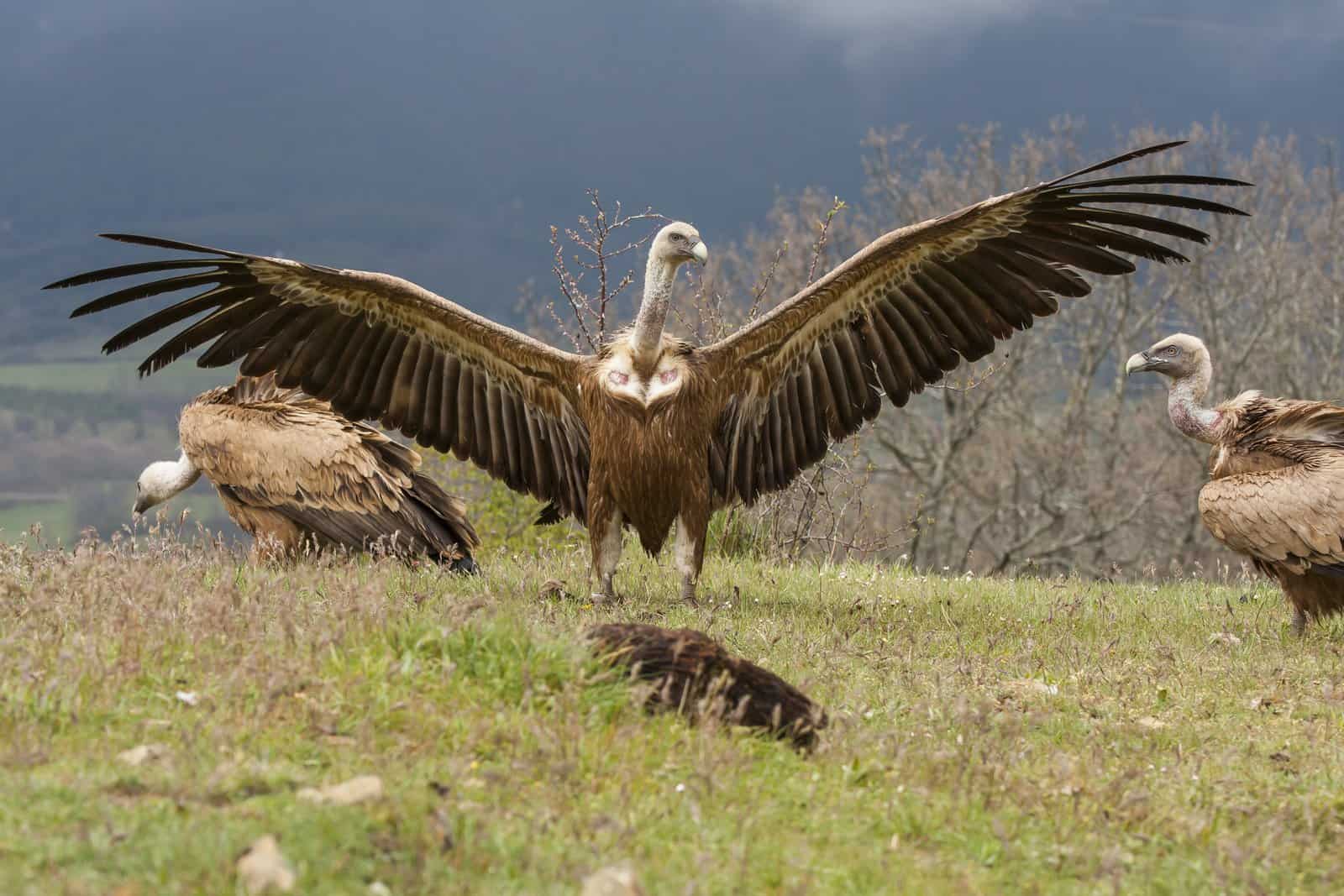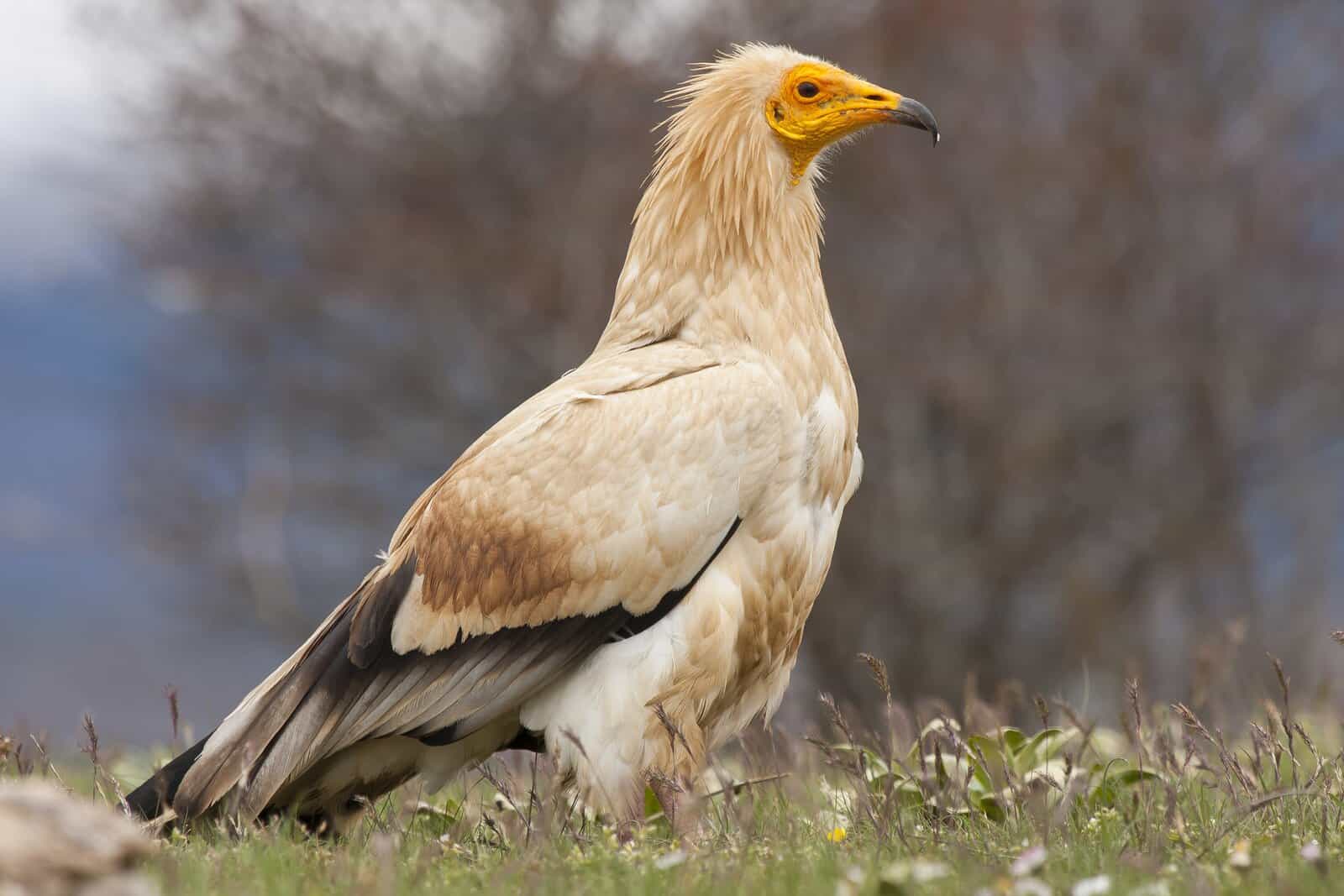
Eagle: 10 Surprising Facts about the Raptor
Eagles belong to the Accipitridae family, which belongs to the order of raptors (Accipitriformes), as they are considered diurnal birds of prey, meaning that they live most of the time during the day, which helps them to see their prey from high altitudes. The golden eagle is the most powerful in the world; however other characteristics may give an advantage to other types as well.
Eagles are known as the most powerful and largest birds of prey ever and the most deadly to other birds and small animals, as there are several types of eagles on the globe that are distinguished from each other and vary in terms of strength, size, and flying speed.
Eagles and vultures are known to be of the same family. However, the differences between them are in size, appearance, habitat, diet, call, and behaviour. In this article, we will talk about eagles and vultures according to their strength.

Habitat
Most eagles live in the tropics and subtropics and are often found in open areas, on slopes, on tall trees, or on the ground. It builds its nests on trees or on cliffs and sometimes in large colonies, and for the King vulture, it lives in Mexico and southern Argentina, while the Turkish vulture is located in North America, in the south of the United States in particular.
Some of them migrate to the north of the United States and Canada. As for the roaming ones, they are found in Alaska, Yukon, the Northwest Territories, and Newfoundland. The black vulture lives in North America, especially in the southeastern regions of it, as well as on the eastern coast of southern New England. It is less present in the south of the Great Plains, while the roaming ones are distributed in California, northern New England, and southern Canada. Vultures do not exist in Australia and most of the surrounding islands.
Main Characteristics
All vultures in the New World and some vultures of the Old World have bare heads, and most of them have a large vesicle in the throat to store food. In order to survive for a long period without food in order to adapt to the occurrence of famines, the vultures of the Old World are distinguished by relatively strong feet, while the vultures of the New World have flat and weak feet.
Average Age
The average age of the eagles is about 70–80% of these birds die at the age of five, but the adult eagle lives in the wild for about 20–25 years, while eagles in captivity usually live more than 40 years, some reach 50 years due to the caring veterinary, controlled environment, and nutrient-dense diet.
Social Communication
Most eagles live a social life; they fly and search for food in groups. The different types are social only when they descend at night to perch on trees, including the turkey vulture. The number of eagle colonies varies from one species to another. For example, the number of members of the group of white-backed eagles ranges from 10-12 eagles, while bearded eagles live in groups of up to 25 birds. As for the members of the group of spotted eagles, their numbers may reach 1000 pairs.
Food
The majority of eagle species feed on carrion only. Others, such as the white-headed Egyptian eagle, feed on fish, reptiles, and small mammals, while the palm nut eagle feeds on fruits as well. They feed on carrion. They have special beaks and behaviours that enable them to eat different parts of the carcass.
From an environmental point of view, vultures get rid of 70% of the total carrion in the ecosystem in which they live, which protects humans and animals from the spread of diseases caused by these dead bodies.
Adaptation to eating carrion
Vultures feed on carrion and rotting meat, which may cause many diseases to other animals and birds. They also often begin to eat carrion from the anal region, which gives them a natural outlet for the inside of the carcass.
They also wait until the skin of the carcass becomes porous, which means that the decomposition and putrefaction of the carcass have reached their maximum. This means that the vulture’s regular food is rich in bacteria, toxic substances, and excrement.
So, what protects eagles from disease?
Eagles are distinguished by their ability to adapt to the types of toxic bacteria that they ingest. On the other hand, we find that its digestive system has the strength and ability to coexist with types of bacteria that are deadly to many living things, and these bacteria, in turn, were able to withstand the harsh conditions of the eagle’s digestive canal.
They also contribute to the breakdown of nutrients inside the alimentary canal, and surprisingly, when the bacteria found in the faeces of some vultures living in the Copenhagen Zoo were analyzed, whose diet is similar to that of the rest of the birds of prey in the garden.
It was found that its faeces contained bacteria similar to those found in the faeces of free vultures that feed on carrion, while it was different from the faeces of birds that share the same diet in the garden. This raises the idea that the nature of the eagle’s digestive system may have more influence on the bacterial contents of the gut than the eagle’s diet. Previous findings indicate that the relationship between microbiota and digestion in the vulture is more complex than previously thought.
Types of Eagles
It is noteworthy that there are about 60 different types of eagles, and the following is the most important information about the types:
Bald eagle
It is one of the most famous types of eagles, it is distinguished by its ability to adapt to various types of environments, such as forests, swamps, mountainous areas, and many others, and its females weigh about 7 kg, and their wingspan may reach approximately 2 m. The bald eagle is distinguished by the presence of white feathers above its head and its dark brown body. It also lives throughout North America, Mexico, and Canada. It is the bird that represents the national symbol of the United States of America.
Spanish eagle
The Spanish imperial eagle is distinguished by the presence of white stripes on its shoulders. Its body is covered with brown feathers, and its length ranges between 70–80 cm, its wingspan reaches about 2 m. The Spanish eagle is characterized as a long-lived bird, but it is threatened with extinction, so the Iberian Peninsula provides protection for it. These eagles live in the Iberian Peninsula, particularly in coastal and mountainous environments.
Golden eagle
It is one of the most widespread eagles in the world, as the eagle lives on various continents, including North America, Europe, Asia, and Africa, mountainous, agricultural, and slopes. The golden eagle is distinguished by the distinctive colour of its head feathers, which varies between brown and golden, and the length of the female can exceed 2 m. It weighs approximately more than 6 kg.

Bonelli’s eagle
It is endemic in the regions of the Mediterranean basin to Southeast Asia, specifically in its mountainous regions of it. The length of these eagles is about 70 cm. Its wingspan reaches about 180 cm. It is distinguished by the brown colour of its feathers, along with the presence of brown stripes on its chest. It is noteworthy that this species is threatened with extinction, specifically in France, due to several reasons, most notably the loss of its habitat, illegal hunting, and lead poisoning.
Harpy eagle
It is one of the largest and most powerful types of eagles in the world. It lives in tropical areas as it is endemic in jungles and rainforests that contain large trees. Harpy eagles are found in regions of Central America all the way to northern Argentina. The length of this bird is about one meter, and the length of its wings reaches about 2 m. The colour of its feathers tends to be white, and the length of its strong claws exceeds 10 cm. It is indicated that this species is threatened with becoming extinct as a result of the loss of its habitat.
Black-and-chestnut vulture
It is native to the South American continent, these eagles are distributed from the city of Venezuela to northeastern Argentina, and they live specifically in the forests of the Andes mountains. It reaches a length of about 80 cm and has a leaden feather colour in addition to black lines on its chest and a crest above its head. The eyes of these eagles are distinguished by having an orange iris. It is indicated that this species is also threatened with being extinct.
Steller’s sea eagle
It is a marine species that live in northeastern Asia near coastal areas. The length of these eagles is about one meter, and the wingspan is about 2.5 meters. This type of eagle has a strong beak that is distinguished by its yellow colour, and its legs are of the same colour. It feeds on fish, and its body is covered with dark brown feathers with some white marks on the forehead, wings, and thighs. It is indicated that this species is threatened with being extinct.
New World Vultures

The New World vultures are distinguished by several characteristics, including that they do not build a nest but rather lay their eggs in the cracks of high rocks or in the hollows of trees. They are bare-headed so that the blood does not stick to the feathers when the eagle puts its head inside the carcass.
Feathers encourage the growth of bacteria, while the bare head is exposed to sunlight that kills bacteria and protects the eagle from diseases, just as the vultures of the New World do not have a throat, therefore; they can only hiss and hum. Among the most famous types of New World vultures:
Turkey Vulture
Known scientifically as Cathartes aura, it is one of the most widespread New World vultures. It is distinguished for its small size, and its wingspan reaches approximately 2 m. the colour of its feathers is brownish-black, referring to the colour of the turkey. Also, the sense of smell of the turkey vulture is very developed, so it is the first to find carrion.
Black vulture
Known scientifically as Coragyps atratus, it is the most common type of vulture. The black vulture lives in the tropics and subtropics. It usually leaves to the neighbouring temperate regions. It is a black bird with a compact body; its body length reaches 60 cm, with two short wings, a short tail, and a bare head. The back of the neck is covered with feathers.
king vulture
Scientifically known as Sarcoramphus papa, it lives in tropical forests extending from southern Mexico to Argentina. It is multicoloured; the head and neck appear red, yellow, bluish, and grey, while its eyes are white with red rings, its upper feathers are orange, and the lower part is white. The wingspan of the King eagle reaches 2 m, and the body length is about 80 cm.
Andean condors
Scientifically known as the Vultur gryphus, it and the Canadian California are among the largest birds that are called flying. The wingspan of a male Andean condor can reach 3.2 m, and the weight of the male reaches 15 kilograms, while the female’s weight reaches 11 kg. The colour of the male’s body is black, and the feathers of his wings are greyish-white. The colour of the head, neck, and follicles is red or pinkish, and the neck is surrounded by white feathers.
California condor
Scientifically known as Gymnogyps californianus, its body length from beak to tail usually reaches 2.9 m. The weight of each male and female California condor reaches 11 kg. The condor is black in colour, and its wings are surrounded by lines of white feathers. The colour of the head, neck, and crops is red and orange.
Old World Vultures
Vultures of the Old World differ from the vultures of the New World in that they have a throat and can make different sounds, such as grunting, croaking, and shouting. They also build nests of sticks on trees or rocks, and they have wide wings, feet, and strong beaks. Among the most famous eagles of the ancient world:

Cinereous vulture
It is sometimes called the black vulture and is scientifically known as Aegypius monachus. It lives in southern Europe, Asia Minor, the central steppes, and the highest mountains in Asia. It is one of the largest birds that can fly, and some scientists consider it the largest vulture and the largest bird of prey ever. The Cinereous eagle has a body length of approximately 1 m, and its weight is 12.5 kilograms. It has two wide wings, and the distance between them is approximately 2.7 meters. Its colour is black, and it has a short, wedge-shaped tail.
Egyptian vulture
Scientifically known as Neophron percnopterus, it spreads from northern and eastern Africa to southern Europe and from the Middle East to Afghanistan and India. It is a small eagle with a body length of 60 cm. Its plumage is white with a few black feathers on the wing, its face is bare of feathers, but there are feathers of gradual length on the head.
Common griffon
Scientifically known as Gyps fulvus, it is widespread in southern Russia, the Balkans, northwest Africa, and the Spanish Highlands. Its feathers are red from above and reddish-brown with some white stripes from below.
Lappet-faced vulture or Nubian vulture
It is scientifically known as Torgos tracheliotus and lives in Africa. Its wingspan reaches 2.7 m, while its body length reaches 1 m. It is a powerful eagle that dominates other types while feeding. Its feathers are black and brown from above, while the abdominal region is white. Its tail is wedge-shaped, and its face is pink or red. A skin with many folds extends from both sides of its bare head.
Palm-nut vulture
Scientifically known as Gypohierax angolensis, it lives in West and Central Africa. Its body is approximately 50 cm long, and it has an orange face that is devoid of feathers and a yellow beak. Surprisingly, it is a vegetarian vulture. However, it sometimes eats some crustaceans and dead fish.
Red-headed vulture
Known scientifically as Sarcogyps calvus, it lives between Pakistan and Malaysia. Its body length is approximately 75 cm, and its wingspan reaches 2.7 m. The colour of its feathers is black and white on the chest, it has a huge black beak, and its skin that extends from both sides of the neck has multiple folds.
White-headed vulnerability
Scientifically known as Trigonoceps occipitalis, it is distinguished by its pale yellow triangular-shaped face and red beak. Its feathers are black except for the tips of the wings and the abdomen, so the feathers on them are white in colour. Its body length reaches 80 cm, and its wingspan reaches 1.8 m.
Eagle’s Death
Eagles die in several ways, including the following:
Natural Death
They grow old, their bodies weaken, and they die, apart from dying of old age. Eagles die from the following diseases:
West Nile virus
Bald eagles become infected when they eat infected prey. The virus is also transmitted by mosquitoes, and the infection can be transmitted to other bald eagles.
WRES virus
It also affects bald eagles and is said to be similar to the hepatitis C virus in humans, with symptoms such as seizures, tremors, brain damage and death.
BeHV virus
It is infected by vultures that do not show symptoms, so it has not been established whether the virus is the actual cause of the disease.
Other injuries
Infection also comes when eagles’ wounds are infected, and in the absence of treatment in the wild, infection usually kills them.
Artificial Death
Sometimes eagles do not die from old age or disease, and there are some unnatural reasons as follows:
Wind turbines
One of the most important causes of the unnatural death of eagles is wind turbines, as they get caught during flying in the blades of the turbines and get killed.
Predators
Eagle eggs and chicks can fall prey to other predators, such as raccoons, crows, and squirrels. However, such incidents are rare because parent eagles are usually around to defend their young.
Hunting
Despite the existence of laws that prohibit hunting eagles, some of them are still hunted by humans, so hunters shoot birds or poison them with bait from animals.
Poisoning
Eagles die from lead poisoning when they feed on dead animals with bullets. They show symptoms such as pain, weakness, seizures, neurological weakness, and difficulty in landing because it is difficult to treat eagles in the wild, so it is likely that they will die.
If you enjoyed learning about this facinating animal why not check out more fantastic facts about other animals: Koalas, Ostriches, Land Animals, Sharks, Raccoons, Moon and Sun Bears, Rats, Sheep, Chickens, Cats, Pandas, Monkeys and Whales.
Why not subscribe for as little as £1.99 per month to access over 1000 fun educational videos!


Leave a Reply